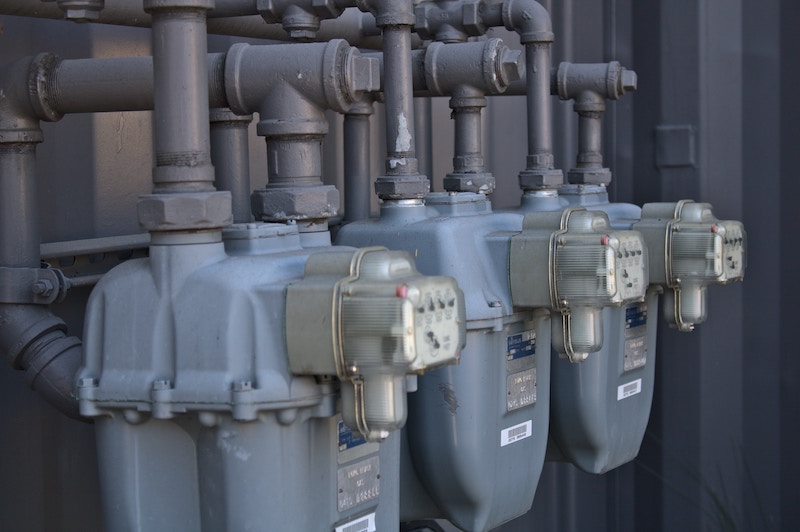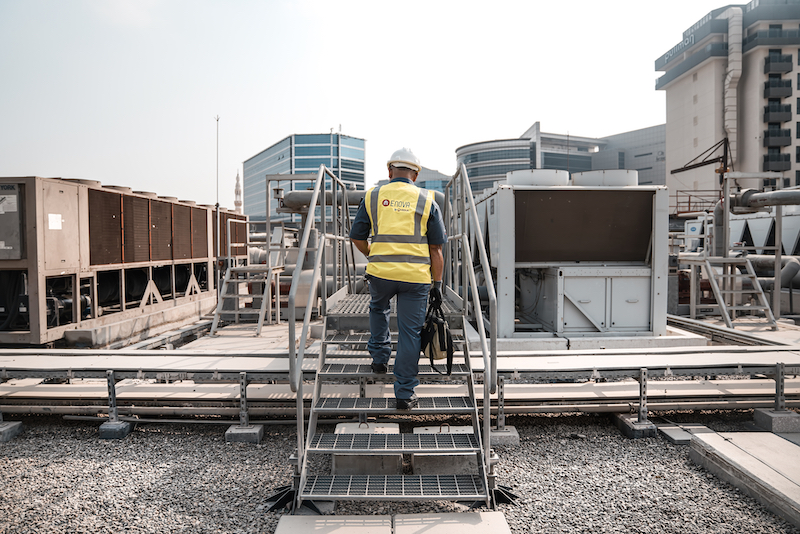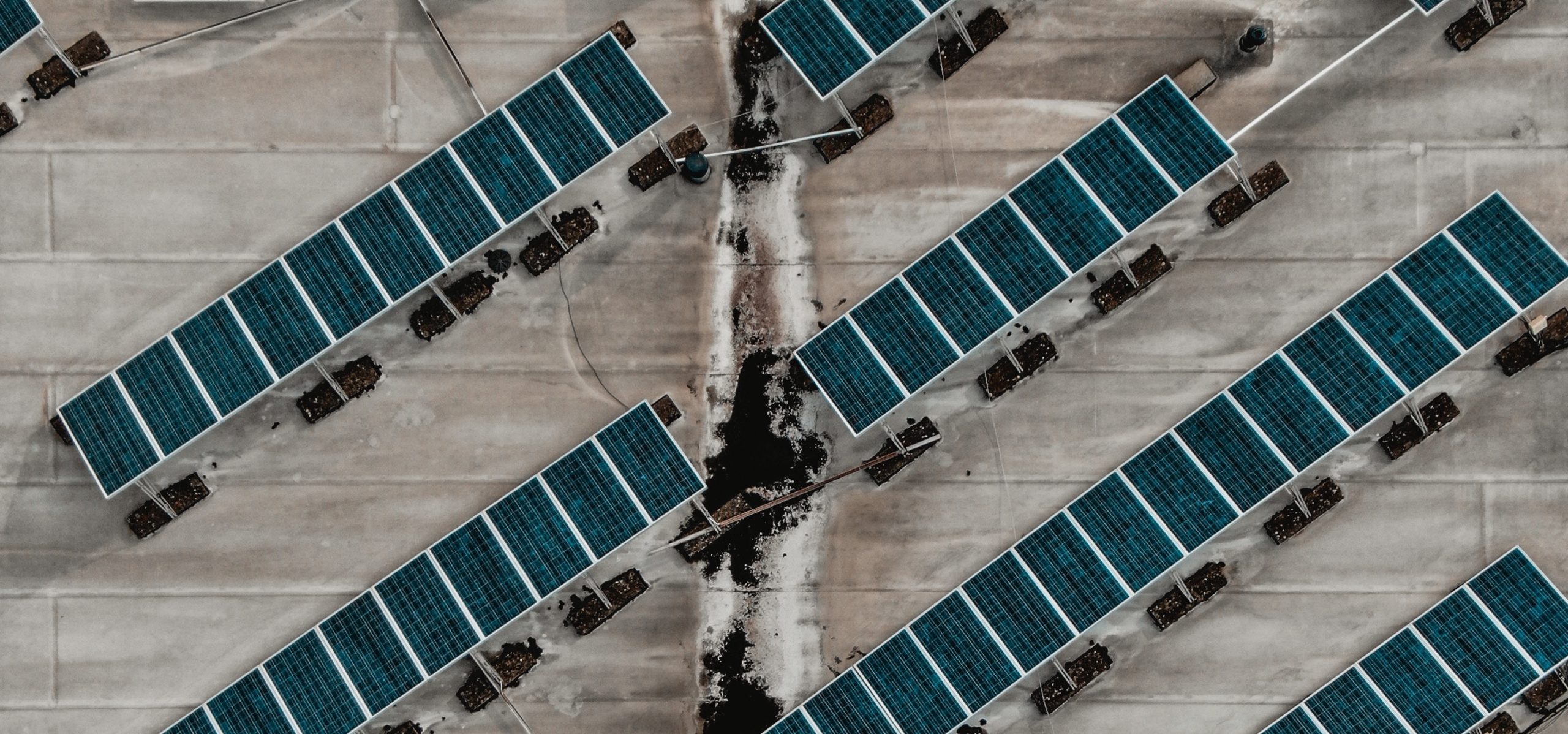
Saving Energy: From Oil Shocks to Digitized Services
The age of abundant energy based on fossil fuels relied on three structural elements: suppliers whose profits increased with the quantity of energy consumed, unlimited local usage thanks to resources imported from far away, and heavy, centralized infrastructure managing supply and distribution. The age of energy sobriety is a profound transformation of these three pillars, opening up new market opportunities based on the optimization of existing energy rather than extraction, maximizing local resources to reduce global impact, and creating decentralized networks organized around local consumers. While it is difficult to know exactly what this new world will look like, it will be profoundly different in terms of its actors, geography, and equipment.
Grégory Quenet
If we look at the timeline of the history of energy from the beginning of humanity, we cannot say that the past two centuries have been characterized by energy savings. On the contrary, as noted by Patrick Criqui, a research director at CNRS (French research center), “from 1900 to 1950, global energy consumption doubled, from one to two billion tons of oil equivalent (known as “toe”), then there was an acceleration and a six-fold increase between 1950 and 2010. It only took sixty years to go from two to twelve billion toe: just an instant on the scale of human history.”1 And it is not over. In the 2022 report of the International Energy Agency (IEA), the scenario based on current policies predicts that total energy demand will increase by 21 percent and electricity consumption will increase by 50 percent by 20402.
Of course, these numbers hide very disparate local realities, as since the end of the twentieth century, it is mainly emerging countries that have been driving the growth in energy demand. Among developed countries, too, there are different models of energy consumption. The model of low-density, primary energy-producing territories like the United States, Canada, or Australia is characterized by high demand for transportation and energy-intensive household, automotive, and industrial equipment. On the other hand, European countries and Japan differ by having a higher population density and lower energy resources, resulting in a per capita consumption that is half as much as the previous model’s. France is one of these countries whose history has been marked by more moderate energy consumption. In 1913, it already consumed a quarter of American needs, as Alain Beltran, a research director at CNRS, reminds us. During the first oil shock, for a base consumption of 100 in France, Americans were at 260, Great Britain at 120, and Japan at 86. Alain Beltran concludes, “Out of necessity, our country has never truly ‘wasted’ its energy.”3
However, the main efforts of French policies have long focused on ensuring the security of the energy supply. The question is still far from resolved, as according to the IEA around 775 million people in the world still do not have access to electricity in 20234. But in order for the Net Zero emissions scenario to become a reality by 2050, as recommended by the IEA and IPCC, it is imperative to go further in combining supply security with energy savings and the promotion of renewable energies. “Current high energy prices highlight the benefits of increasing energy efficiency,” notes the International Energy Agency, “and encourage changes in behavior and technology in certain countries to reduce energy consumption. Measures to improve energy efficiency can have dramatic effects—today's light bulbs consume at least four times less energy than those sold twenty years ago—but there is still a lot to be done.”
To amplify its effect, Eric Bardelli, Technical and Project Director of Veolia's Energy business in France, shares his belief in the importance of local public-private partnerships to meet the challenge of energy savings: “The key to success in embarking on the path of energy performance is to identify methodologies applicable to each region to save time and be more efficient. Veolia's expertise and know-how in energy issues allow us to take a broader view and develop a collaborative vision in which local elected officials play a decisive role.” Energy sobriety and flexibility must therefore become predominant in the future, following the path laid out by the responses implemented after the oil shocks, whose good habits we have too quickly put aside.
From Oil Shocks to the Development of Energy Savings
In 2022, Western countries found themselves in a situation similar in many ways to that which they had faced with the oil shocks of the 1970s: their energy supply security was at risk. More than the growing awareness of environmental issues, this is what has rekindled political attention to energy savings. Veolia has been developing its expertise on this topic in the meantime. When the French government announced an energy sobriety plan to cope with the rise in energy prices following the Russian invasion of Ukraine, those over sixty years of age clearly recognized that history was repeating itself. The government notably encouraged the French to not heat rooms beyond 19°C (66°F) and to connect to the EcoWatt application to avoid consumption peaks. Around a hundred companies also signed the EcoWatt charter with RTE, following Veolia's example, committing the group to replacing the most energy-consuming devices on the sites it operates, doubling its electrical load shedding capacity, and reducing temperature settings to 19°C (66°F) on its four thousand sites.
Similar measures had already been taken during the oil shocks of 1973 and 1979. In 1974, a law was passed to cap the legal temperature at 20°C (68°F), and then at 19°C (66°F) in a 1979 decree amending the law. These temperatures were even included in the Energy Code in 2015, but no control measures were truly implemented, neither at that time nor until today. Awareness campaigns continued until the early 1980s, promoting “weather-heating” to better “manage consumption.”

Even at that time, sobriety was making its way into the language and companies were being called on to take action. As Pierre Amouyel, Head of Energy and Tertiary Activities at the General Commission for Planning, stated in the June 1980 issue of La Jaune et la Rouge magazine, “It is now essential that sobriety no longer be solely the result of ‘good family’ consumer behavior, but to be materially integrated into the equipment, in the broadest sense, that they use in the houses or apartments they occupy, in the vehicles, individual or collective, that transport them, in the offices where they work, or in the factories that produce the goods they consume.” This period did not go without destabilizing heating companies, such as Compagnie Générale de Chauffe, which did not have permission to pass on the increase in oil prices to their tariffs. However, it saw in the government measures a real opportunity for development, as it stated in a 1979 brochure: “Compagnie Générale de Chauffe can play a very active role in this new policy. Indeed, since its inception, its main goal has been to ensure energy control and develop its use under the most rational conditions.”
The vision of that time resonates perfectly with that developed by Compagnie Générale de Chauffe from its origins: “To ensure the complete and sustainable management of installations, the group offers various types of contracts tailored to the needs of its customers. [...] These basic contracts, while ensuring users’ appreciated comfort, meet the requirements of energy savings, equipment longevity, modernization, and renewal of thermal potential.” It is also an opportunity to better organize, under the leadership of Bernard Forterre, the Energy division of CGE, and develop contract modalities that will become milestones, gradually standardizing and structuring the sector. In addition to the initial P1, P2, and P3 contracts (respectively: supply and energy management, equipment maintenance, and guarantee and renewal of equipment) that already underpinned the activity created by Léon Dewailly, the P4 on financing renovation works has been added.
Throughout the 1980s and 1990s, despite the oil counter-shocks5 that would reduce political attention to energy and its economy, the work begun would continue, leading to the creation of Dalkia in 1998 and, with it, the first DESCs (Dalkia Energy Savings Centers) which, from the headquarters, allowed the energy performance of its clients’ buildings and installations to be monitored. This was an initial formalization of what would later be called Hubgrade and would become an essential element of Veolia's value, both for improving its service offerings and for managing its own processes. And it is in Belgium and especially in Dubai that this service would experience a real acceleration in its development.

Energy Savings, an Accelerating Activity in the Middle East
Paradoxically, it was in the United Arab Emirates that Hubgrade services would progress. This is paradoxical because one does not spontaneously imagine that it is in oil-rich countries, where energy is cheap and abundant, that offers to save energy would develop most rapidly. Yet, not all Emirates are alike—and Dubai has no oil. That is why, in the early 2000s, its princes invested in service activities, with the ambition to make their land a shining city at the heart of the United Arab Emirates’ international influence.
Majid Al-Futtaim, who had created and managed an empire in utility services and had seen a Bedouin people transition from fishing for oysters and searching for pearls to a new civilization based on oil in just a few decades, was a visionary, convinced that commitment to sustainability would be a key element in his country's international acceptability. To achieve his ambitions, he partnered with Dalkia in 2002 in a joint venture, MAF-Dalkia, which would later become Enova.
“Veolia found a local partner who was committed and willing, which allowed the expertise to be developed and replicated in other geographic areas,” says Anne Le Guennec, former CEO of Enova. “With MAF, we found a great partner who trusted us with their entire portfolio and with whom we advanced in co-construction. They opened up a playing field for us, and we worked on it together.” This application field was considerable from the outset, from shopping centers, amusement parks, and hospitality to residential areas. Then, driven by the joint venture's desire to make its activity profitable, it transitioned from operating only Majid Al Futtaim's assets to offering building services on behalf of third parties.
Today, environmental reputation issues have materialized, and Enova is mobilizing its expertise in cost reduction in hospitals, airports, cinemas, hotels, and shopping centers in eight countries: the UAE, Oman, Bahrain, Qatar, Egypt, Lebanon, Saudi Arabia, and Turkey. And there is no shortage of projects. “In the Middle East, reducing building cooling consumption is the main focus of our clients’ energy savings,” explains Renaud Capris, CEO of Enova, as temperatures sometimes exceed 50°C (122°F) in this part of the world.
Lighting and a set of measures leading to a reduction in electricity consumption follow. To help its clients achieve their financial, operational, and environmental objectives, Enova has a technical department of around fifty engineers specializing in energy audits. “We spend several weeks on the building to analyze its weaknesses and make technical recommendations,” explains Renaud Capris. The idea is to install the right solutions in the right place to minimize the building's energy consumption. To save energy, the group offers “retrofitting” solutions (upgrading aging equipment), optimization of air conditioning, and on-site maintenance at all levels of the chain thanks to its specialized engineers. “We are the only ones who ensure the maintenance of energy installations by guaranteeing a specific percentage of savings,” adds Capris.

Hubgrade has become a smart monitoring tool that optimizes installations and preserves resources in terms of energy, water, and raw materials. Capris says, “In a shopping center, we collect a certain amount of data, such as electricity consumption, room temperature, air quality, and any information that has an impact on the building's energy consumption. Our data analysts can then monitor this consumption in real time thanks to an extremely efficient algorithm and know what action needs to be taken.” As true performance control centers, Hubgrade centers combine human and digital expertise. “When a deviation is identified by a Hubgrade center,” explains Francisco Silvério Marques, “our on-site operators intervene immediately—for example, to replace a filter, lubricate moving parts, or check the tightness of a regulating valve. These are often invisible elements but have a significant impact on energy consumption.”
This expertise in energy savings has also continued to develop through Siram in Italy, which ensures the energy efficiency of numerous hospitals and public buildings beyond questions of energy supply, including the Monaldi Hospital in Naples and the campus of the University of Parma. While the core of the university’s energy renovation project involves the construction of a new trigeneration plant and a geothermal plant to supply 50 percent of the university's energy needs with green energy, digital technologies were also used to control and monitor energy flows in real time. This solution made it possible to implement specific predictive diagnostic functions as well as use innovative algorithms capable of reducing primary energy consumption by 20 percent—the objective set by Siram for each project in Italy.
In 2020, inspired by these examples, Veolia had sixty-four Hubgrade control centers in over twenty-two countries. While each center has its own characteristics, they are now converging toward a common ecosystem in order to benefit from the most efficient innovations in energy savings. A Hubgrade Academy has also been established to provide training worldwide for Hubgrade analysts, covering all the knowledge necessary for their profession: contractual models, roles and responsibilities, Veolia's energy performance analysis strategy, and means of communication for different stakeholders. The interest in deploying these global services in local communities and businesses has become evident: building energy consumption accounts for 35 to 40 percent of global CO₂ emissions, and in Europe alone, the European Commission estimates that three out of four buildings are energy inefficient.
Christophe Schuermans, Director of Building Energy Services Development at Veolia, explains that “the analysis and energy audit of a building lead to a large number of actions, such as adapting equipment operation based on actual occupancy: renewing air in a meeting room based on the number of people present, slowing down or stopping escalators depending on the crowd, lowering temperatures in unoccupied areas, using motion sensors to activate lighting, etc. These actions, combined with operational monitoring by energy analysts in our Hubgrade centers, allow for significant savings of over 10 percent with a low investment.”
Hubgrade: Digital Tools for Energy Savings
Despite the development of renewable energies, the fight against climate change cannot escape energy sobriety. To address the ecological and economic challenges of the twenty-first century, digital tools have been developed and deployed by Veolia for over a decade. These tools serve the optimization of energy consumption, as well as the better management of water and waste services.
Could the future of energy efficiency lie in tracking? This is what Hubgrade suggests. This remote management center combines artificial intelligence and human intelligence to optimize the energy performance of buildings and urban infrastructure. Through connected objects and cutting-edge technologies, data from water networks, energy services, and waste collection are sent in real time to the platform to be analyzed by professionals. By relying on field agents equipped with digital tools, remote data analyst teams, and system engineers, the service offered by Hubgrade is built around three major pillars. The first pillar, “connect,” creates a connection with clients by providing them with real-time information. It goes hand in hand with the second pillar, “support,” which assists them in their operational issues, and ultimately, with “improve,” which helps them optimize the operational and environmental efficiency of equipment and infrastructure.
From Bilbao to Dubai, Sixty-Four Control Centers
From Bilbao, Spain, to Sydney, Australia, passing through Dubai and Shanghai, Veolia had sixty-four Hubgrade control centers worldwide in 2020, in over twenty-two countries. Through these centers, Veolia supports shopping centers, hospitals, schools, and office buildings to move toward a future that is less energy-intensive, as well as less water-intensive and less waste-producing.
In Dubai, Enova, Veolia's subsidiary for the Middle East, has been assisting the Mall of the Emirates shopping center in the operation and maintenance of its cooling and heating system since its opening in 2005. In Bilbao, the Hubgrade center manages two thousand installations, one thousand buildings, sixty industrial sites, and twenty cooling and heating networks. In France, the management of water and waste in the city is monitored and analyzed in the center of the city of Lille. Hubgrade leads to improved profitability as activities are measured and examined in real time, enabling immediate action by technical teams in case of issues. In terms of energy bills, Veolia allows its clients, through these “hypervision” centers, to achieve an average savings of 15 percent. In 2020, this represented 35,500 MWh of heat and cooling and 77,000 MWh of electricity saved.
However, efforts must be accompanied by education for the public and staff. With the Awareness service, Veolia offers a communication approach aimed at raising awareness among building users about the environmental impact of their behavior, as was the case in seventy-four schools in Košice, Slovakia, where Veolia installed seventeen thousand thermostats and replaced old boilers while implementing an energy-saving campaign among the students. The same approach was taken in Brussels, where the 1,700 employees of the National Pensions Office (ONP) were sensitized to energy sobriety through conferences, progress indicators on smartphones, and stickers and posters describing good practices to adopt. In doing so, Veolia has become a reference company in terms of energy performance, combining its offers with an operational performance approach for its own services: the ReSource plan, launched in 2022, aims to increase the company’s energy production, reduce its consumption, and make it more flexible.

Is Energy Flexibility a Major Challenge for the Decades to Come?
Many observers believe that today the question of energy management, i.e., how much energy we consume, is as important as when we consume it. The issue gained national importance in France with the implementation of the EcoWatt system during the winter of 2022–2023, a kind of “electricity forecast” that aimed to inform users in real time about consumption on the electricity grid in order to avoid consumption peaks that could lead to a network failure. Launched by the French electricity network operator RTE, in partnership with the Agency for the Environment and Energy Management (Ademe), EcoWatt was born out of specific problems related to the simultaneous increase in energy consumption in winter and the decrease in French nuclear production. These conditions could easily be repeated in the coming years, since renewable energies such as wind and solar power, which are expected to play an increasing role in our energy supply, have the particular characteristic of facing significant production variations. The nuclear power plant itself tends to become intermittent, even if only marginally, but the variation is more controllable in this case.
In summary, the volatility of electricity prices and availability requires us to rethink our approach to energy consumption. Some French people are already familiar with the concept of energy flexibility, as around thirteen million of them benefit from off-peak tariffs and therefore heat their water heaters at night to use the water the next morning. On the scale of a tertiary building, this comes down to encouraging similar good practices, such as programming the charging of electric vehicles during low consumption periods, operating equipment alternately, and starting heating earlier in the morning. These habits need to be automated through smart grid systems—intelligent electricity networks. This is where Veolia's Hubgrade solution, for example, comes in, capable of analyzing personnel usage and anticipating consumption peaks, as well as alerting users to malfunctions and controlling building flows such as heating, hot water, ventilation, and air conditioning. Not to mention energy production, as many buildings are now equipped with this capacity through photovoltaic panels or geothermal energy. The building then becomes a full-fledged player in the electrical grid.
To achieve this flexibility, it is not only necessary to change the energy paradigm in people's minds but also to be accompanied by experts in the field, whose expertise ranges from anticipation and certification to ensuring network stability. This is the case for Flexcity, a Franco-Belgian startup created in 2012 under the name Actility that was acquired by Veolia in 2019. For Flexcity, the new energy situation should push industrial and tertiary groups to think not only as energy consumers but also as energy brokers. “We help companies thrive in a world with high electricity volatility, consume and produce energy at the right time, and pay attention to the overall balance of the network,” explains Arnout Aertgeerts, Chief Executive Officer at Flexcity. By aligning demand and production, companies like Flexcity hope to correct negative energy prices in the wholesale market, which are a signal that non-flexible production is significant while demand is low. In such cases, some will have to pay to produce energy, and conversely, others will be paid to consume it.
In the context of electrical flexibility, some will be remunerated for “disappearing,” that is, shifting their consumption when necessary for the network. For example, Flexcity supported the steel company Thy-Marcinelle in its efforts to save energy and reduce its CO₂ emissions. This industrial company can modulate the overall consumption of its site, reducing it temporarily by mainly reducing the consumption of its electric arc furnace and rolling mill, in order to relieve the Belgian electricity network. These occasional consumption reduction activations adapt to the technical constraints of the site thanks to Flexcity's equipment, which evaluates these power modulations based on rigorous data analysis. Through its expertise, Flexcity determines the volumes and availability times, as well as the conditions of its offerings on the market. Thy-Marcinelle also receives compensation for reducing its electricity consumption while operating a service in line with its process improvement requirements.
Veolia itself also contributes to this balance. “We have implemented this approach on the sites we operate,” says Gad Pinto, Director of Local Energy Loops activity at Veolia. “Indeed, for water treatment plants, we can ask them to reduce or shift their electricity consumption without changing the treatment process. Dedicated offers for the water sector have been developed to meet the specific needs of each type of site: drinking water production, pumping stations, wastewater treatment plants, etc.” By installing a control box or developing communication interfaces with existing remote management systems, Flexcity is able to send activation signals for demand response capacities during periods of tension reported by RTE, for example. Upon receiving this signal, participating sites have between a few minutes and several hours to reduce their consumption by stopping or slowing down certain treatment processes for one to two hours.

Overall, in 2022, Flexcity enabled the flexibility equivalent of one nuclear unit in Europe. In theory, the applications of this flexibility could be deployed across even larger domains thanks to electricity storage, which is currently expensive but could benefit from innovations in the coming years. For example, the European NGO Transport & Environment estimates that the number of electric vehicles in circulation in Europe will be between thirteen and fourteen million in 2025 and between thirty-three and forty-four million in 2030. And since the storage capacity of these vehicles will be several thousand gigawatts, it is not a stretch to imagine that these batteries could stabilize the electrical grid by injecting electricity into the system during consumption peaks. In its preparatory report “Understanding and Managing Electrification by 2035,” presented in June 2023, RTE predicted a significant increase in electricity consumption in France, reaching between 580 and 640 terawatt-hours by 2035, as a result of decarbonizing our energy mix. “This rate has not been reached since the 1980s,” says the network operator, “and highlights the magnitude of the challenge the French electricity system faces if it wants to meet new ambitions and the latest overall parameters.”6
To meet this growth, RTE relies on energy efficiency, sobriety, renewables, and nuclear power. Of course, the report also predicts greater variability in electricity production, which necessarily requires flexibility measures. “In this context, the role of storage solutions and demand flexibility solutions will become increasingly crucial,” the report continues.
These analyses are very similar to those of the International Energy Agency, which states that “power plants will need to be more responsive, consumers more connected and flexible, and network infrastructure reinforced and brought up to date with digital technology.” These challenges are ones to which Veolia is increasingly preparing to contribute.
However, this massive electrification of our energy uses must be accompanied by its indispensable counterpart in the fight against climate change: the decarbonization of our energy. This project must give prominence to local regions, which are the only ones capable of resiliently producing local renewable energy from biomass, geothermal energy, solar power, wind power, waste heat recovery, or wastewater. These are all local solutions to the global problem of our planet's warming.
- CRIQUI, Patrick. “Global Energy Dynamics”, in JEANDEL, Catherine and MOSSERI, Rémy. L’Énergie à découvert. Paris: CNRS Editions, 2013. ↩︎
- International Energy Agency (2022). “World Energy Outlook 2022”. ↩︎
- BELTRAIN, Alain, “La politique énergétique de la France au XXe siècle : une construction historique [French Energy Policy in the Twentieth Century: A Historic Construction],” in Les Annales des Mines, August 1998. ↩︎
- International Energy Agency. “For the first time in decades, the number of people without access to electricity is set to increase in 2022,” (2022). ↩︎
- After the oil shocks of 1973 and 1979, the price of crude oil took a steep dive toward the middle of the 1980s, even returning to a level similar to that before 1973. In 1985, the term "oil counter-shock" was coined to describe this phenomenon." ↩︎
- RTE, Réseau du transport d’électricité (2023), “Comprendre et piloter l’électrification d’ici 2035 [To Understand and Drive Electrification by 2035].” ↩︎